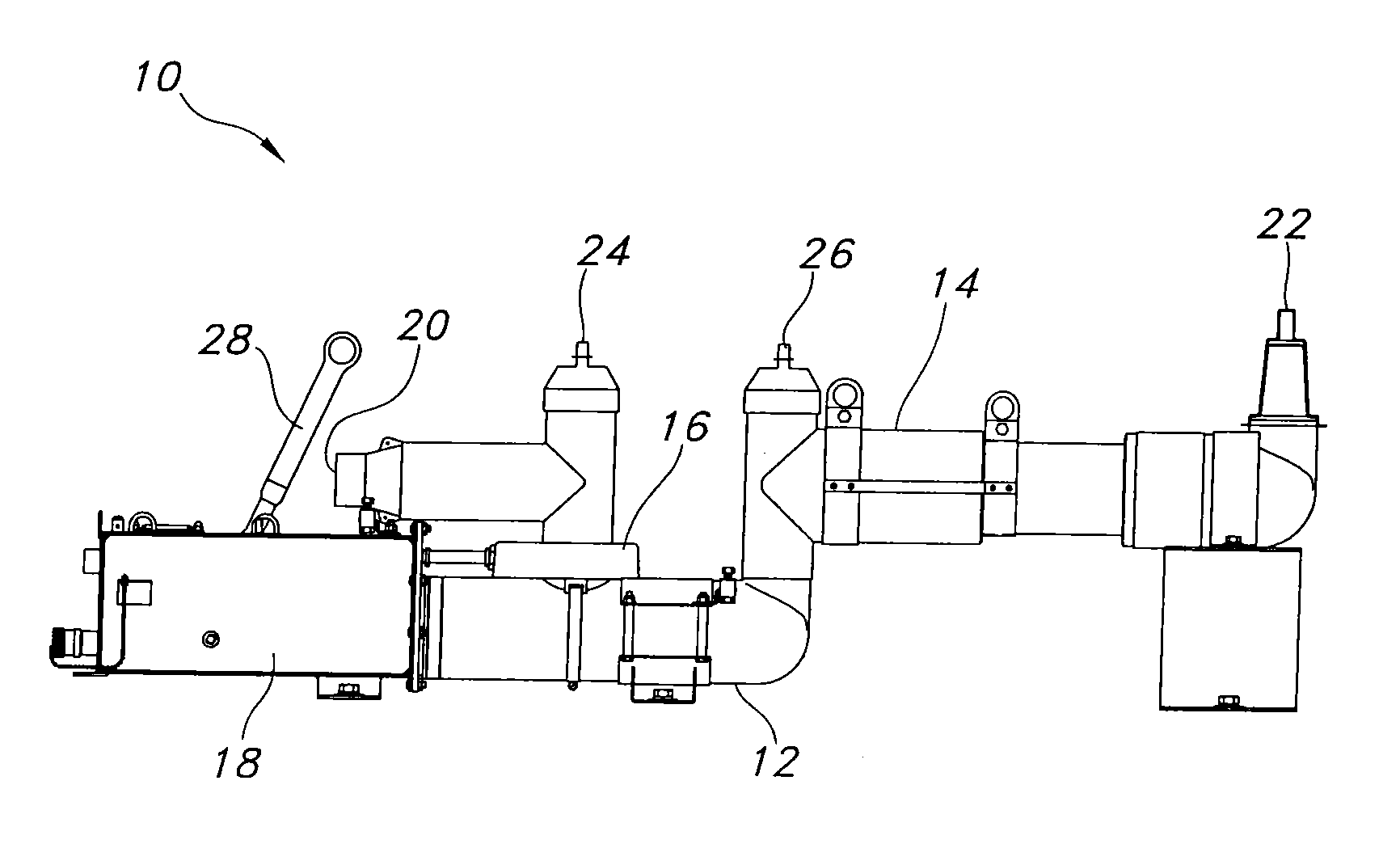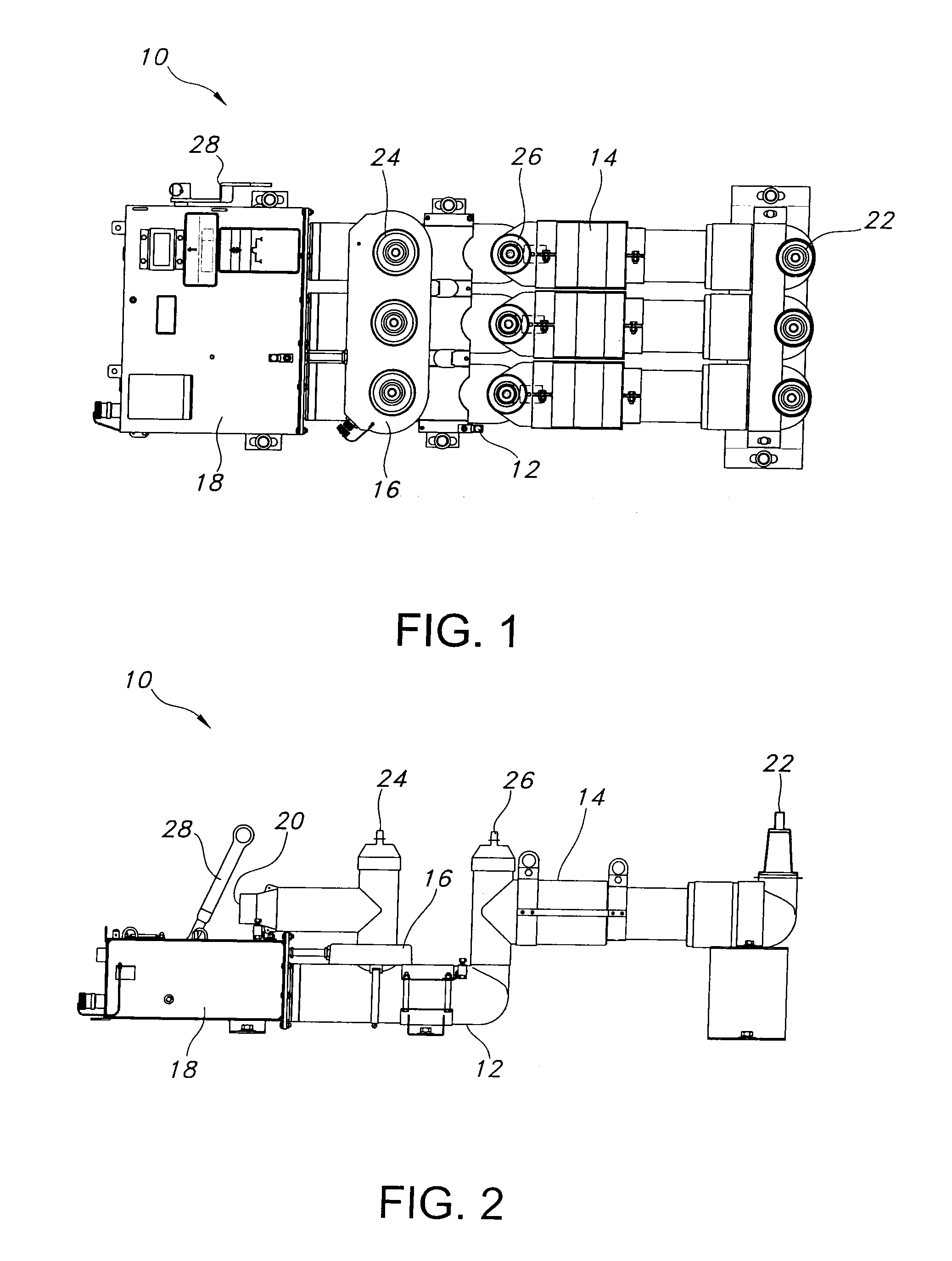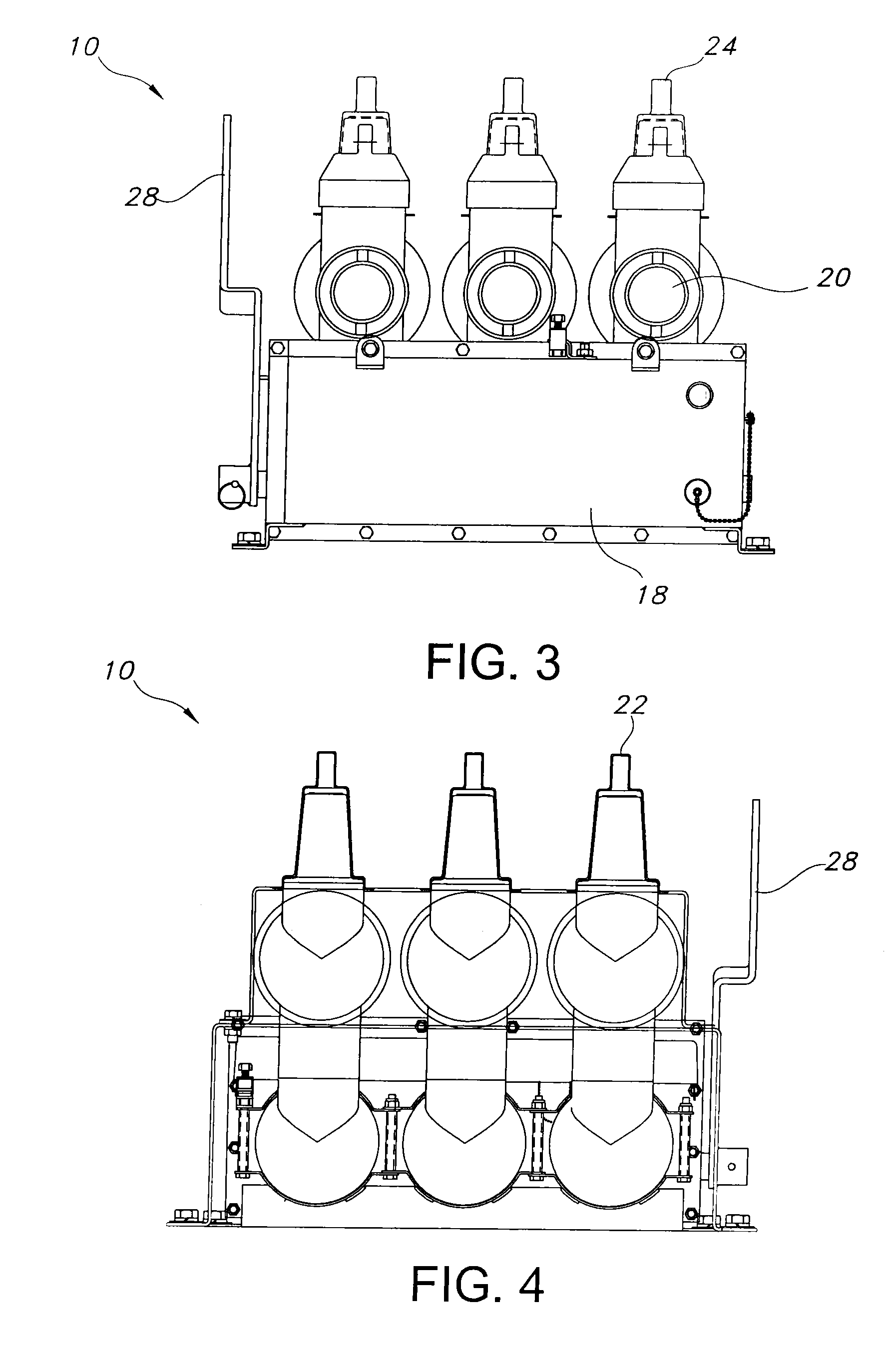35kV Rubber Molded Fused Vacuum Interrupter
a vacuum interrupter and rubber molded technology, which is applied in the direction of high-tension/heavy-dress switches, air-break switches, electrical equipment, etc., can solve the problems of damage to the fuse assembly, inability to design full-range fuses, and inability to meet the physical size of the fuse, and the limiting factor in the design of these full-range fuses is the overall length
- Summary
- Abstract
- Description
- Claims
- Application Information
AI Technical Summary
Benefits of technology
Problems solved by technology
Method used
Image
Examples
Embodiment Construction
[0028]The present invention is directed to a 35 kV rubber molded fused vacuum interrupter assembly, which combines a rubber molded vacuum interrupter with a current-limiting backup fuse. This allows the current-limiting backup fuse to be rubber molded and creates a compact, fully “dead-front” protective device suitable for 35 kV systems. The device provides not only overload and fault protection, but also current and energy limiting protection. As used herein, the term “dead front” means that there are no voltages present on the operating side of the equipment.
[0029]The high voltage rubber molded fused vacuum interrupter assembly includes one or more vacuum fault interrupters in a molded insulating structure and one or more current limiting fuses encapsulated in a rubber molding. The vacuum interrupter assembly can be installed on a single-phase high voltage line or a three-phase electrical circuit (also referred to herein as a three-phase system). For the single-phase, high voltage...
PUM
 Login to View More
Login to View More Abstract
Description
Claims
Application Information
 Login to View More
Login to View More - R&D
- Intellectual Property
- Life Sciences
- Materials
- Tech Scout
- Unparalleled Data Quality
- Higher Quality Content
- 60% Fewer Hallucinations
Browse by: Latest US Patents, China's latest patents, Technical Efficacy Thesaurus, Application Domain, Technology Topic, Popular Technical Reports.
© 2025 PatSnap. All rights reserved.Legal|Privacy policy|Modern Slavery Act Transparency Statement|Sitemap|About US| Contact US: help@patsnap.com



